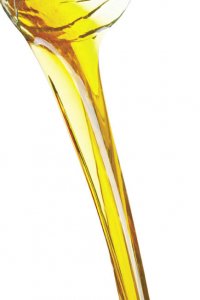 Wind equipment requires specialized lubricants that are designed to last. Certain blends of base oil and additives cover the different lubrication requirements of individual bearings in wind turbines. A current trend has been finding ways to reduce maintenance costs and simplify lubrication routines. Also, as wind turbines are built higher and in more extreme conditions, the trends are toward using lower-viscosity lubricants to address cold weather effects, produce more power, and decrease micropitting. What’s more, engineers are using specialty synthetics instead of mineral oils, and particle counters to monitor contamination.
Wind equipment requires specialized lubricants that are designed to last. Certain blends of base oil and additives cover the different lubrication requirements of individual bearings in wind turbines. A current trend has been finding ways to reduce maintenance costs and simplify lubrication routines. Also, as wind turbines are built higher and in more extreme conditions, the trends are toward using lower-viscosity lubricants to address cold weather effects, produce more power, and decrease micropitting. What’s more, engineers are using specialty synthetics instead of mineral oils, and particle counters to monitor contamination.
Operators are using one lubricant for all bearings to reduce maintenance costs and simplify lubrication in the nacelle. “Repairs on wind turbines can be costly, difficult, and dangerous,” says Jesse Dilk with Klüber Lubrication. “Therefore, it is vital to use high-quality components at every opportunity. Bearings, seals, and lubricants are essential elements in most mechanical systems. Optimizing these elements leads to more efficient, reliable machines.” High-performance greases have special blends of base oils and additives to cover different lubrication requirements of individual bearings. Another adhesive grease lubricates gears in pitch and yaw drives, while reducing the risk of migration inside the nacelle and onto the tower.
The industry has moved toward synthetics instead of mineral oils to minimize maintenance, as a long-term trend. “Synthetic lubricants tend to be well balanced, and have been widely tested on laboratory rigs and in the field,” Dilk says. “The benefits of specialty lubricants includes better wear protection, higher efficiency from lower friction, and wide operating temperatures. Specialty synthetic lubricants typically outperform mineral-based versions under the same conditions and extend lubrication intervals.” Exxon Mobil also says synthetic gear oil protects against micropitting, scuffing wear, and corrosion. Synthetic oils also function over a wide temperature range and resist deposit formations. Furthermore, many new lubricants and greases extend oil change intervals from a matter of months to years, which significantly reduces maintenance time and cost.
Shell Lubricants says it also recognizes the significance of reduced reliability and demands of operating wind farms in remote locations (on and off-shore) and in harsh climates. Their engineers have developed a variety of lubricants that can withstand extremely low temperatures and protect against micropitting and bearing wear. In addition, the company offers an oil-analysis program that can help operators monitor the condition of their lubricant and equipment to avoid unscheduled downtime.
Castrol Industrial says its synthetic lube blended for the wind industry can offer a significantly greater resistance to micropitting than mineral-based lubricants, provide gearbox protection under high loads, and preserve turbine components longer. It also creates a 5 to 10% thicker oil film to improve gearbox protection and cut wear, while smoothing surfaces resulting in minimal wear or damage.
A final trend is to keep a sharper eye on oil condition. Particle counters, for example, such as those from Parker Hannifin Corp., provide contamination control for lubricants. Such units independently monitor system contamination trends, and give early warnings with LEDs or digital display indicators, of low, medium, and high contamination levels. WPE
Filed Under: Lubricants, News





Not one sentence in the entirety of these six paragraphs of drivel answers the question raised by its title.